Tips for Successful Surfboard Making … Assembling the Frame

There are many key elements of building a Bywater hollow wooden surfboard, but it all starts with the frame. The frame is the back bone of the entire board, where you begin your surfboard making journey.
Our frames are made from special plans specific to the chosen board style & board length.
The frame consists of; paulownia rails (3 strips on each side, 18mm thick), nose block, tail block, timber tabs and internal CNC cut ribs.
If purchasing a premium kit, all these items are prepped ready to go, whereas our DIY kit supplies the materials that require further milling and shaping prior to assembly.
In our comprehensive instruction guide, we stress the importance in doing a dry run of the assembly. That is; form the frame with no glue*. This allows for a deeper understanding of how the frame takes shape and to ensure you’re confident before the glue enters the picture. It’s harder to rectify mistakes when there’s glue involved! The other benefit of performing the dry run is it allows the frame to form new memory to that of the board you are creating. Especially with the rails at the nose and tail end, these are tapped into the end blocks and by leaving the dry run frame for 24 hours, it will be easier in the glue up stage.
*We do make an exception for gluing the small timber tabs onto the rails before the dry run. These act as stopper blocks for the nose and tail blocks and need to be set in place for the end blocks to be taped in.
We also glue the ribs to the internal rails as the foundation.
It’s important the frame is assembled correctly, with the nose and tail blocks at the right ends and the ribs facing the right way up. If your frame is wrong then your finished surfboard won’t be perfect. A few key materials are required for the frame assembly; tape, a lot of pegs and some frame stands. All of which can be included in your kit.
Pegs are an inexpensive way to use a lot of mini clamps along both rails, top and bottom of the frame. All three rails need to be securely clamped together while the glue goes off.
Once you’re happy with the assembling of your frame, you can get serious with the glue up. Using our recommended glue of epoxy resin and Surfset Flex, once complete - these frames are durable and are a very stable foundation for the surfboard and what’s next to come.
With Stuart’s tuition and expert guidance, you’ll learn the intricacies of assembling your frame to the same standard that has resulted in many successful Bywater surfboards.
Stay tuned for the next instalment of 'Tips for Successful Surfboard Making'..
Read this blog post for more tips for a successful DIY board experience



